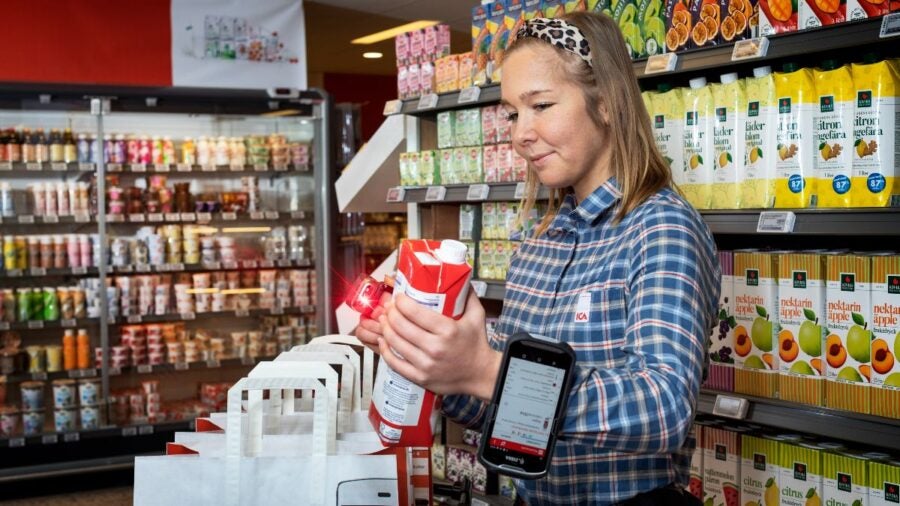
The Arctic Circle is a place of wonder over Christmas, but this year it should be grocery retailer leaders, not just wide-eyed children, looking to the snowy North for some much-needed inspiration.
According to Jacob Tveraabak, chief executive of Scandinavian grocery technology company StrongPoint, Scandinavia’s adoption of technology by grocers can provide valuable lessons for UK supermarkets facing unprecedented cost hikes and labour shortages.
“Pre-pandemic, UK grocery retailers traditionally benefited from price stability and access to relatively low-cost labour,” says Tveraabak.
“But now, UK grocers are facing challenges which Scandinavian countries, with some of the highest labour costs in the world, have had to grapple with for decades. They have been forced to leverage technology much faster to reduce costs, boost efficiency and increase profitability, and have become the Silicon Valley of grocery retail technology. If you go into a Scandinavian supermarket, you’ll find it is years ahead of most other countries.”
Tveraabak acknowledges that UK grocers have made strides in grocery technology, particularly warehousing, but upgrades are available to drive further efficiencies, improve customer experience and retain customers who are looking for savings. “There are a lot of efficiency-saving opportunities for UK grocers under pressure, and they can learn from what the Scandinavians have done by leveraging technology,” he says. “Everything has changed in the last 12 months. This makes finding these savings more important than ever.”
The focus needs to be on three key areas – warehousing, ecommerce and shop floor technology. With warehousing and automated fulfilment, StrongPoint has worked closely with fellow Norwegian robot technology group AutoStore to provide an automated solution for grocery retailers that stores four times the inventory in the same space. Retailers can automatically store and retrieve items including frozen goods (which saves workers going in and out of frozen rooms collecting items).
This links to ecommerce technology, where further savings can be made and productivity boosted by improving in-store pick rates – essentially how quickly staff can complete online orders for customers. Tveraabak says that store workers without technology assistance can, on average, pick 60 to 90 items an hour. Existing self-built UK grocery picking technology and repurposed warehouse management system technology have lifted this to around 150 to 220 items an hour. However, StrongPoint’s solution can help workers almost immediately raise their rate to between 240 and 350 items per hour.
“This isn’t robotic technology, which remains a very small part of the market, but augmenting the power of manual picking, which is still the most common way for British supermarkets to fulfil orders,” explains Tveraabak. “Some store owners who didn’t believe our numbers actually followed their staff counting items just to double-check!”
If you go into a Scandinavian supermarket, you’ll find it is years ahead of most other countries
Championing click-and-collect over home delivery is another way grocers and customers can find savings. In Sweden, click-and-collect hovers at around 50% of all grocery ecommerce orders, unlike the UK’s home delivery dominated market. Supermarkets can install temperature-controlled grocery lockers next to stores or along commuter routes, allowing customers to pick up their online orders on their way home from work or at their convenience. Any shift towards click-and-collect can substantially slash retailers’ costs.
On the shop floor, electronic shelf labels – small screens next to goods showing real-time price changes and promotions – can also remove labour-intensive tasks such as producing and replacing paper labels. Additionally, the shelf edge labels can be set up with blinking lights to identify items to pick, saving precious seconds when locating products. In fact, Norway has one of the highest rates of electronic shelf label penetration in the world.
Other in-store innovations, which would make any UK shopper blink twice, include AI-powered self-checkouts which identify not just the type of fruit or vegetable but which variety, avoiding the need to search through menus.
These checkouts can also verify age when purchasing restricted items, avoiding the awkward and slow staff approval process. In Norway, another common sight is age-controlled or high-value items residing in automated pick-up cabinets that customers can access after selecting the item from a digital screen, retrieving a ticket and paying for them at checkout.
“None of this is expensive ‘pie-in-the-sky’ technology. It is proven and integrated into thousands of stores used today by millions in Scandinavia,” says Tveraabak. “This is a win-win for UK grocers wanting to save costs and for shoppers, who will see a much more frictionless and potentially cheaper shopping experience in the years ahead.”
To find out more, visit strongpoint.com

The Arctic Circle is a place of wonder over Christmas, but this year it should be grocery retailer leaders, not just wide-eyed children, looking to the snowy North for some much-needed inspiration.
According to Jacob Tveraabak, chief executive of Scandinavian grocery technology company StrongPoint, Scandinavia’s adoption of technology by grocers can provide valuable lessons for UK supermarkets facing unprecedented cost hikes and labour shortages.
“Pre-pandemic, UK grocery retailers traditionally benefited from price stability and access to relatively low-cost labour,” says Tveraabak.
“But now, UK grocers are facing challenges which Scandinavian countries, with some of the highest labour costs in the world, have had to grapple with for decades. They have been forced to leverage technology much faster to reduce costs, boost efficiency and increase profitability, and have become the Silicon Valley of grocery retail technology. If you go into a Scandinavian supermarket, you’ll find it is years ahead of most other countries.”

